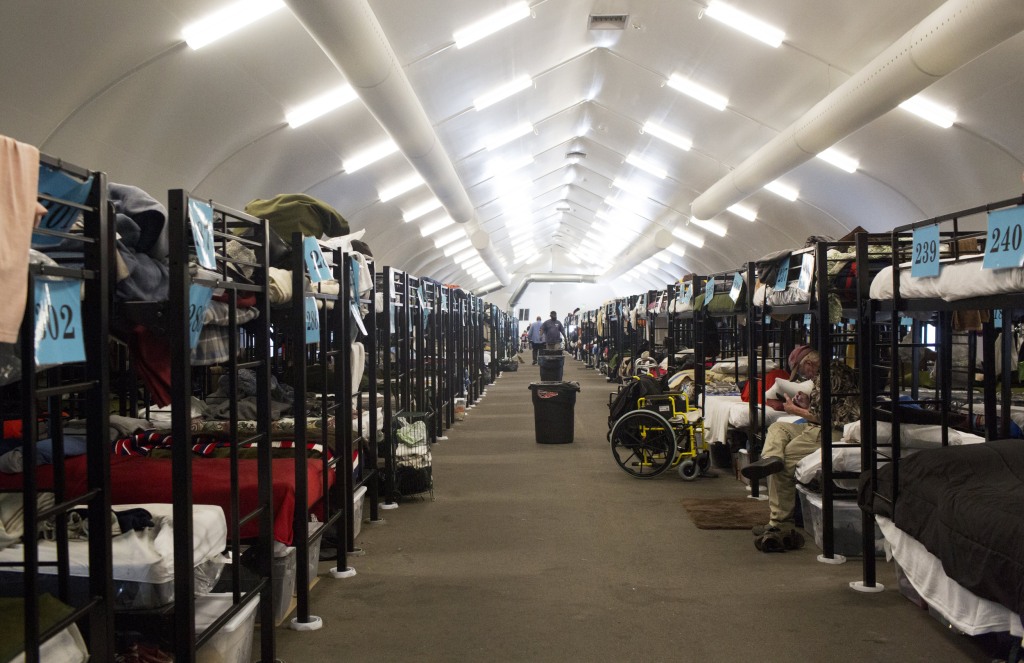Here's City-Journal with some questions and observations on the homeless population and the coronovirus:
Another Vulnerable Population
The homeless present special challenges in the current crisis.
Thus far, no homeless people have tested positive for coronavirus, though that may be due mainly to the sporadic nature of America’s current testing regime. Homeless-services agencies long ago realized the threat that they face. The “phony war” character of the last few weeks has given officials time to plan their response. Most assume an outbreak of COVID-19 among the homeless as a question of when, not if.
The homeless population is large and diverse, and some are more at risk than others, both in terms of contracting the virus and dying from it. Many of the street homeless practice social distancing as a lifestyle. Shelters strictly regulate access by non-clients. The homeless are unlikely to have attended a Biogen conference or traveled recently on a cruise or plane.
But the social isolation of the homeless has major downsides as well, insofar as it may impede the heightened public-health consciousness that officials claim is crucial to mitigating the crisis. A number of news articles have reported worries among the homeless, but it’s hard to say how representative those reports are, because low-functioning, highly isolated homeless people are less likely to speak to reporters.
As a whole, the homeless are disproportionately young. In the U.S. in general, 22 percent are 60 and older, but among those who stayed in a shelter at some point during 2017, only 5.4 percent were 62 or older. In San Francisco, 10 percent of the homeless are 61 or older. In New York, 7 percent of sheltered single adults are over 65. Los Angeles County reports that 6.5 percent of its street population is 62 or older. The relative youth of the homeless is likely a macabre testament to their low life expectancy and poor health. A hard-core chronic case is likely to die decades before the ordinary American.
In terms of the fatality risk from coronavirus, we should be just as worried about the formerly homeless as those sleeping on the subway and in tents. Advocates often speak about housing as tantamount to treatment. In his 2020 State of the State speech, for example, California governor Gavin Newsom recommended using Medicaid funds for housing. But a recent survey by the National Academies found little evidence that permanent supportive housing improved health outcomes among the formerly homeless. Tens of thousands of formerly homeless people age 60 or above live in supportive housing.
Homeless-services administrators have been focused thus far on public-health efforts to slow the spread of the coronavirus and increasing capacity in their systems. In particular, increasing housing capacity has been the goal for years, and cities are always behind on this, even when they have an abundance of resources at their disposal. Now they really can’t wait. San Francisco has acquired RVs. King County in Washington bought a hotel for quarantine purposes. Anchorage is eyeing a city-owned ice arena. Even if shelters aren’t full, additional capacity is required to thin out overly dense sleeping areas, per the directive of the U.S. Department of Housing and Urban Development.
For service providers, the nightmare scenario is if their frontline staff can’t work because they’re infected, or are quarantined because they might be infected, or have to tend a child whose school has closed. To forestall any staffing crisis, homeless-services agencies should be developing plans to recruit idle staff from elsewhere in the public sector, such as school systems and higher education. These workforces are enormous—K-12 districts always rank among the largest employers in their communities—and some of their functions overlap with those of homeless-services agencies. Even if only a fraction of the idle security and human-services staff can be recruited for use in homeless services, it could well be enough to meet providers’ emergency needs.....MORE
